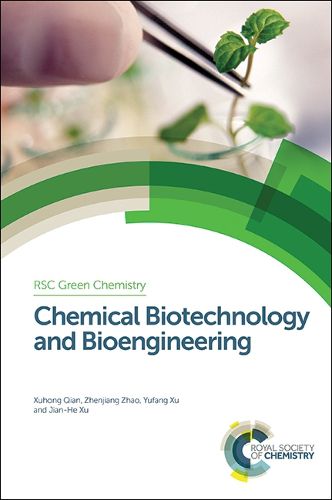Readings Newsletter
Become a Readings Member to make your shopping experience even easier.
Sign in or sign up for free!
You’re not far away from qualifying for FREE standard shipping within Australia
You’ve qualified for FREE standard shipping within Australia
The cart is loading…






In biotechnology and bioengineering, small molecules can be used to increase the efficiency reduce the cost and damage to the environment of certain bioprocesses. This book introduces readers to the important field of chemically promoted biotechnology and bioengineering and presents the theory behind the biotechnology of enzymatic reactions and how they can be chemically enhanced. The book covers chemical modulators for enzymatic reactions, chemically promoted biotechnology in plant cell cultures, chemically promoted biotechnology for plant protection and future prospects for the field. Knowledge gained allows both chemists to make use of biotechnology to solve chemical problems in an environmentally-friendly way, and biologists to make use of chemistry to increase biotechnological efficiency. This book is useful for scientists in a broad range of disciplines, including agricultural chemistry, pesticide science, medicinal chemistry, biochemistry, bio-organic chemistry, cell and molecular biology. Students and researchers in both academia and industry will find it a useful handbook.
$9.00 standard shipping within Australia
FREE standard shipping within Australia for orders over $100.00
Express & International shipping calculated at checkout
Stock availability can be subject to change without notice. We recommend calling the shop or contacting our online team to check availability of low stock items. Please see our Shopping Online page for more details.
In biotechnology and bioengineering, small molecules can be used to increase the efficiency reduce the cost and damage to the environment of certain bioprocesses. This book introduces readers to the important field of chemically promoted biotechnology and bioengineering and presents the theory behind the biotechnology of enzymatic reactions and how they can be chemically enhanced. The book covers chemical modulators for enzymatic reactions, chemically promoted biotechnology in plant cell cultures, chemically promoted biotechnology for plant protection and future prospects for the field. Knowledge gained allows both chemists to make use of biotechnology to solve chemical problems in an environmentally-friendly way, and biologists to make use of chemistry to increase biotechnological efficiency. This book is useful for scientists in a broad range of disciplines, including agricultural chemistry, pesticide science, medicinal chemistry, biochemistry, bio-organic chemistry, cell and molecular biology. Students and researchers in both academia and industry will find it a useful handbook.